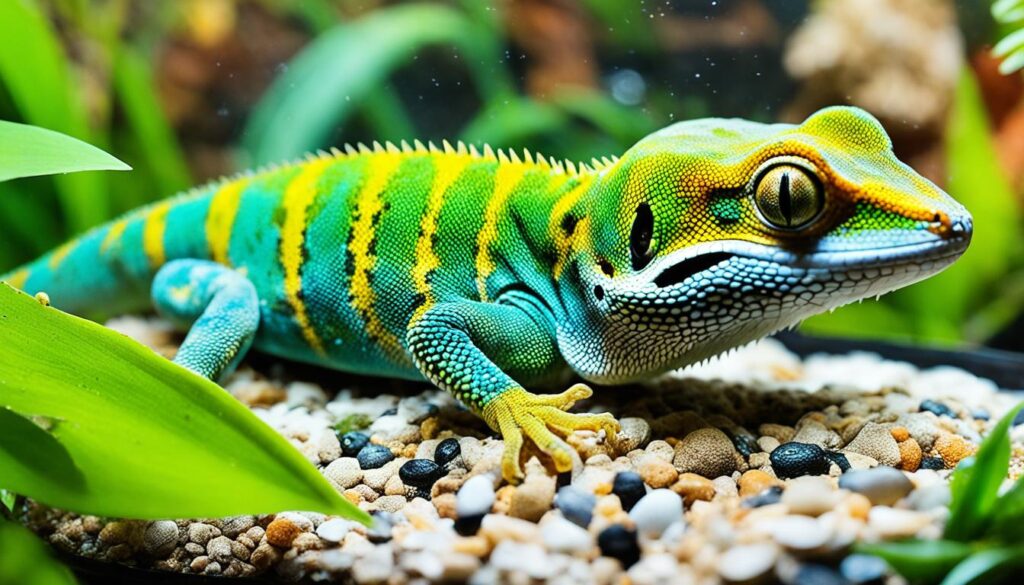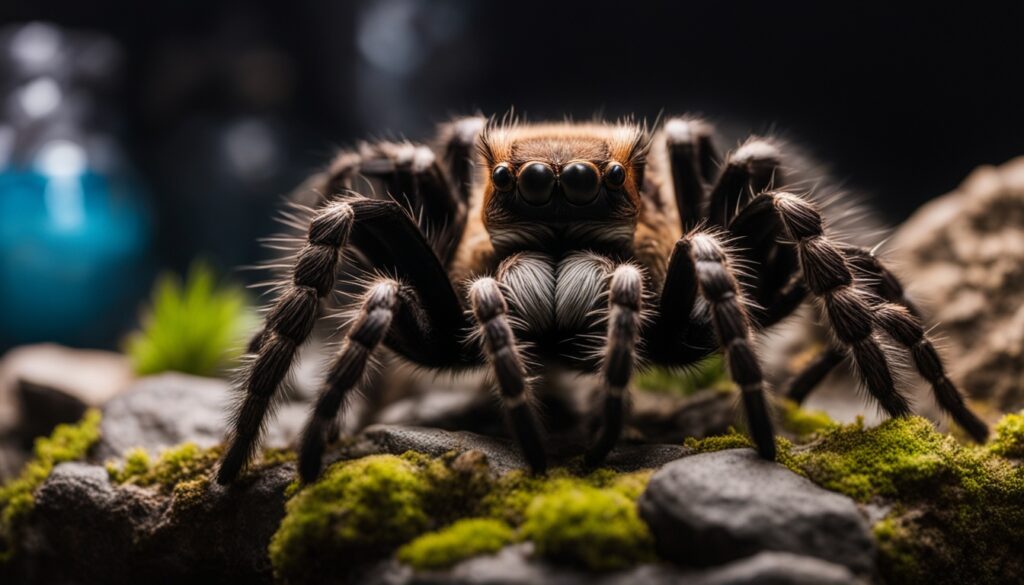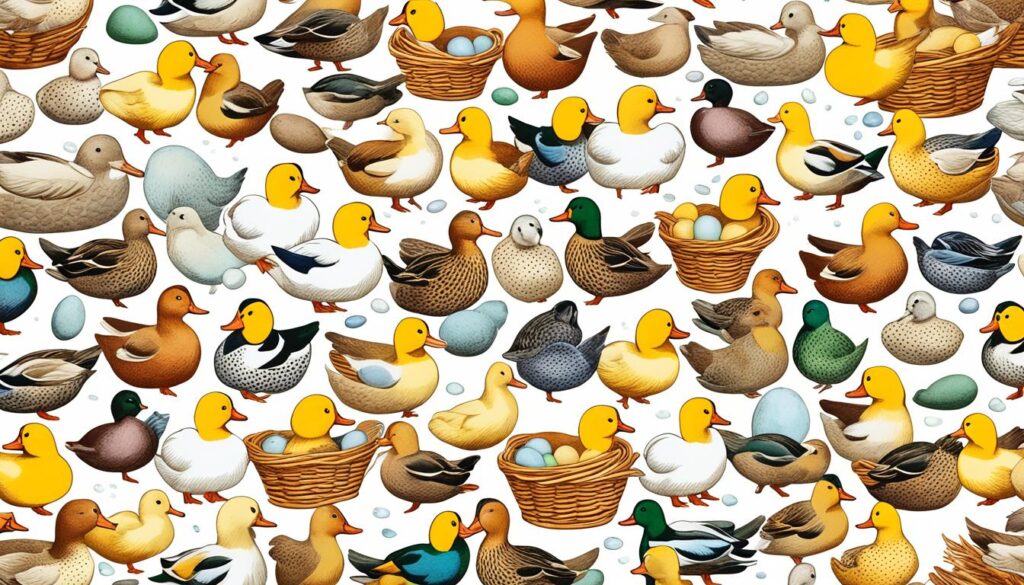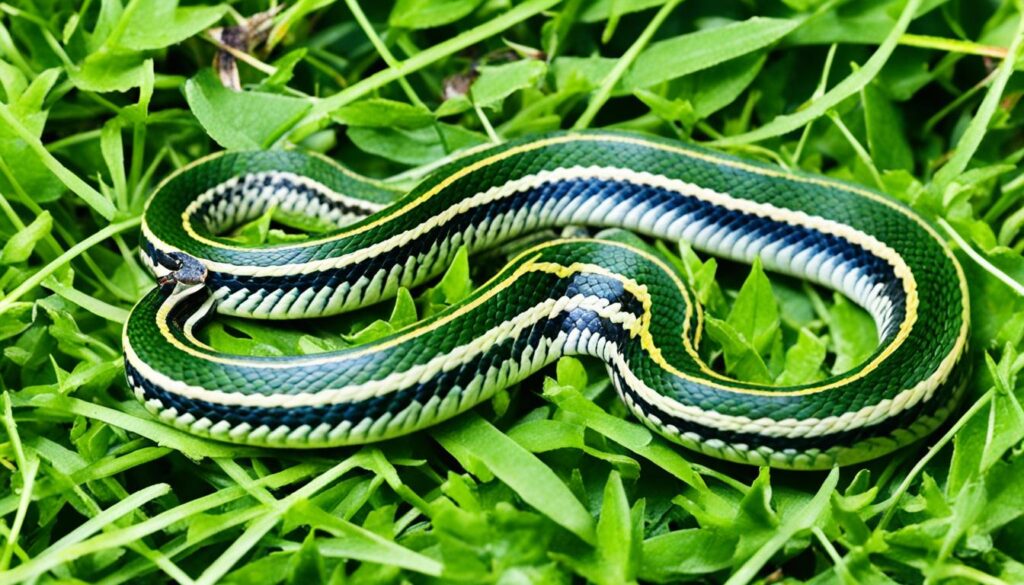Did you know guinea pigs need only about 7.5 square feet of space to be happy? These cute rodents are just one example of the many low-maintenance pets you can have at home. They’re great for busy people, families, or anyone wanting a pet that’s easy to care for.
Getting a pet can make your home feel more lively. But, it can be tough when you have roommates, kids, or work long hours. That’s where low-maintenance pets come in. These pets are easy to care for and don’t need much attention, making them perfect for those with less time.
Key Takeaways
- Low-maintenance pets need less time and effort to care for than traditional pets.
- They’re great for busy people, families with kids, and those with little space.
- It’s still important to do your research and prepare before getting any pet, even easy ones.
- Low-maintenance pets should get the same love and care as other pets.
- Looking into the many easy-to-care-for pets can help you find the right one for your life.
Introduction to Low-Maintenance Pets
For busy people or those new to pets, low-maintenance pets are a great choice. They need less time, cost less, and cause less stress. But, it’s important to know what to consider before getting one.
Benefits of Owning Easy-to-Care-for Pets
Many people find low-maintenance pets appealing. The main benefits include:
- Reduced time commitment: Pets like betta fish, guppies, and hamsters need less daily care than bigger animals.
- Lower costs: These pets are cheaper to buy and keep than more demanding ones.
- Decreased stress: They have fewer needs, making owning them less stressful.
Factors to Consider Before Getting a Low-Maintenance Pet
Choosing a low-maintenance pet is a good idea, but research is key. You should think about:
- Lifespan: Knowing how long a pet lives helps decide if it fits your life.
- Space requirements: Some pets, like turtles or reptiles, need more room than others.
- Dietary needs: It’s important to provide the right food and nutrition for your pet.
Thinking about these points helps you choose the right low-maintenance pet for you.
Turtles and Tortoises: The Zen Masters of Pets
Turtles and tortoises are cool, calm, and easy to care for. They don’t grow too big, so they fit well in a terrarium. They need clean spaces and fresh water but don’t need food every day. Tortoises are quiet and keep to themselves, but their diet needs careful attention.
These reptiles can live up to 200 years in captivity. Jonathan, the oldest living tortoise, is about to turn 190. Tim Yap, Marielle and Leo Po, and Kim Atienza love these long-lived pets.
Tortoises and turtles move slowly, like zen masters. They eat leafy greens, fruits, and sometimes insects. They need a safe outdoor area and a cozy shelter in the rain.
These pets are great listeners and don’t judge. They need a good place to sleep to stay healthy.
“Tortoises and turtles are the very essence of being cool, calm, and collected, and maintaining them is just as easy.”
If you like turtles or tortoises, they can make your home peaceful and fun. They have unique personalities and live a long time. They’re perfect for those who want calm, reptilian friends.
Hamsters: Adorable and Interactive Companions
Hamsters are getting more popular as pets because they are cute and fun. They are small, furry, and love to play. They make great pets for people who want something easy to care for. If you’re thinking about getting a hamster, or just want to learn more, this guide is for you. It will help you set up a great home for your hamster and take care of their needs.
Setting Up a Hamster Habitat
It’s important to make a safe and fun home for your hamster. Use a cage or tank that’s at least 20 gallons with good airflow. You’ll also need a mesh top, food and water bowls, a wheel for exercise, and the right kind of bedding. Choose dust-free options like aspen or paper to keep your hamster’s lungs healthy. Add lots of hiding spots and toys to keep your hamster busy and happy.
Caring for Your Hamster’s Needs
- Offer a balanced diet: Feed your hamster high-quality pellets, fresh veggies, and some fruits and treats. This will make sure they get all the nutrients they need.
- Maintain a clean habitat: Clean out any spots daily and do a full cage clean every week or two. This stops bad smells and keeps your hamster’s home healthy.
- Encourage exercise: Give your hamster a wheel to run in and let them play outside their cage sometimes. This keeps them fit and sharp.
- Handle with care: Hamsters are naturally shy and might not like being held at first. Be gentle and positive when you touch them, and they’ll get used to you.
By making a great home and taking care of your hamster, you’ll really enjoy having them around. They are perfect pets for anyone, whether it’s your first pet or you’ve had many. With the right care, hamsters can be wonderful companions.
Betta Fish and Guppies: Vibrant Aquatic Beauties
Looking for pets that are easy to care for and add color to your home? Think about getting betta fish or guppies. These fish are great for small spaces because they don’t need big tanks.
Betta fish stand out with their beautiful fins and bright colors, from deep blues to vibrant reds and oranges. They live for 2-4 years, making them interesting pets for a long time. But, they should live alone in their tank because they can fight with other betta fish.
Guppies are friendly and can live with other fish. They are fun to watch as they move through the water. Guppies eat a mix of regular fish food and sometimes frozen bloodworms.
| Betta Fish | Guppies |
|---|---|
| Native to Southeast Asia | Originate from the Caribbean and Central America |
| Require a minimum of 2.5-gallon tank | Can thrive in as little as a 5-gallon tank |
| Should be housed alone | Can live in community tanks with other peaceful fish |
| Eat a high-protein diet, including brine shrimp and bloodworms | Omnivorous, eating a varied diet of flakes, pellets, and occasional treats |
Keeping the water clean is key for the health of betta fish and guppies. Changing the water often, using a filter, and checking the water quality are important. This helps these colorful aquatic companions stay healthy in your small tank.
“Betta fish and guppies are the perfect low-maintenance pets for those who want to add a touch of vibrant life to their living space.”
Parakeets: Colorful and Playful Avian Friends
If you’re looking for a pet that’s fun and easy to care for, parakeets are a great choice. They’re known for their bright colors and love to play. These birds are perfect for people new to bird keeping.
Parakeets come in many colors, like green, yellow, blue, white, and gray. They’re full of energy and fun to watch. Their playful nature makes them a joy to have around.
These birds are pretty easy to take care of. They can live from 7 to 15 years in the U.S. Some species, like the Monk parakeet, can live up to 20 to 30 years. To keep them happy, feed them well, give them lots of exercise, and make their home interesting.
- Parakeets show natural behaviors like perching, flying, preening, socializing, and playing with toys.
- They need a diet of high-quality pellets, seeds, fruits, and veggies. They also need sunlight or UVB lights.
- Parakeets should spend at least 30 minutes with their owners every day. They can live with one or another budgie of the same type.
Parakeets might not talk as much as parrots, but they’re still colorful and fun. They love to play and bond with people. With the right care, these parakeets as easy-care pets, low-maintenance bird companions, and interactive avian friends will bring lots of happiness into your life.
“Parakeets are the perfect pets for those looking for a colorful, interactive, and low-maintenance avian companion.”
Anoles and Geckos: Captivating Reptilian Pets
If you’re looking for low-maintenance reptilian companions, anoles and geckos are great choices. These creatures add a bit of the wild to your home. They also need less care than some other reptiles.
Providing the Right Environment for Reptiles
Anoles and geckos are easy to care for but need the right environment to live well. Setting up their living space right is key for their health. They do well in 10-gallon tanks or terrariums with the right temperature, lighting, and humidity.
- Anoles, like the green anole, need a warm, humid place. The temperature should be 75-85°F during the day and 65-75°F at night.
- Geckos, like the popular leopard gecko, like a warmer, drier setup. They prefer temperatures between 75-90°F and low humidity.
- Correct lighting, like UVB and basking bulbs, is key for their health.
- Adding hiding spots, branches, and decorations makes their environment natural and interesting.
By setting up the right habitat and meeting their care needs, your anoles and geckos will thrive. They become low-maintenance yet fascinating reptilian pets.

“Reptiles can make wonderful, low-maintenance pets for those willing to provide the proper care and environment. Anoles and geckos, in particular, are relatively easy to care for and can bring a touch of the wild into your home.”
Sea Monkeys and Goldfish: Low-Maintenance Aquatic Wonders
If you’re looking for pets that are easy to care for, sea monkeys and goldfish are great choices. They offer a fun pet experience for those who don’t want to spend a lot of time caring for pets. These pets let you enjoy the beauty of water life without a big time commitment.
Sea monkeys, also known as brine shrimp, are tiny and only need food every five to seven days. They look whimsical and move in a captivating way. Their tank is easy to keep clean, making them perfect sea monkeys as hassle-free pets.
Goldfish are a classic choice for goldfish as easy-care aquatic companions. They come in many colors and patterns, adding beauty to any room. Goldfish need a big tank and regular cleaning because they can be messy. But, they are still easier to care for than many other pets.
Sea monkeys and goldfish are ideal for those wanting minimal-effort aquatic pets. They need little care, letting you enjoy an aquarium’s calming effect without the big effort of other pets. Whether you’re busy or just want a low-maintenance pet, these fish will bring joy and beauty into your life.
what pets are easy to take care of
Caterpillars and Butterflies: A Metamorphic Journey
Looking for pets that are easy to care for and fascinating to watch? Caterpillars and butterflies are perfect. They are great pets for kids who love learning about nature.
Caring for caterpillars is simple. They just need sticks to climb on and plants to eat. From caterpillar to butterfly, this process takes about six to eight months. It’s a fun way to see nature change without a big time commitment.
Seeing caterpillars turn into butterflies is amazing. It’s a great way for kids and adults to learn about life and change. This pet is easy to care for but teaches a lot.
“Caterpillars and butterflies are fascinating, low-maintenance pets that provide an engaging way to learn about the natural world and the wonders of transformation.”
These pets are great for teaching kids about insects and nature. They are easy to care for and show the beauty of life. Caterpillars and butterflies are perfect for anyone wanting a pet that’s easy and educational.
Tarantulas and Scorpions: For the Bold and Daring
If you’re cool and fearless, consider getting a pet tarantula or scorpion. These unique reptilian companions need a dark, big terrarium away from sunlight. Tarantulas can be up to ten inches long, so they need a big home. They eat live insects like crickets and mealworms. Scorpions are similar, making them great for brave pet owners looking for a low-maintenance pet.
These arachnids might not be for everyone, but they can be amazing pets for the right person. With some research and care, you can enjoy having these exciting creatures at home.
| Tarantula Care | Scorpion Care |
|---|---|
|
|
If you’re drawn to tarantulas or scorpions, these low-maintenance pets can be thrilling. With proper care, they can be a great addition to your home.

“Observing and recording the eating patterns, color changes, and sleeping habits of jumping spiders can provide interesting insights into their behavior.”
Hermit Crabs and Snails: Unique and Fascinating Invertebrates
If you’re looking for pets that are easy to care for and add a bit of fun to your home, consider hermit crabs and snails. These pets are perfect for those who want something different from the usual dogs or cats. They are low-maintenance and can be really interesting to watch.
Hermit Crabs: Shells and Personalities
Hermit crabs are part of the Paguroidea superfamily and there are over 1,100 species of them around the world. They are known for changing shells as they grow, which is quite fascinating. These creatures come in all sizes, from tiny to the huge coconut crab, the biggest land-living arthropod.
To take care of hermit crabs, you need to keep their home warm and humid with enough space for them to molt and switch shells. They eat special pellets and are clean pets, which means they keep their tank clean. But, watch out for them around corals because some can harm them.
Snails: Slow and Steady Companions
Garden snails are great pets if you want something calm and easy to look after. They need a tank with lots of moisture and food like fruits and veggies. Snails are interesting pets because of their slow way of moving and their beautiful shells.
Snails and hermit crabs show how diverse and interesting invertebrates can be. They let you enjoy the beauty of nature right in your home. Whether you like the fun of hermit crabs or the calm of snails, these pets will surely bring joy and wonder.
| Hermit Crabs | Snails |
|---|---|
|
|
“Hermit crabs and snails are the perfect pets for those seeking a unique and fascinating addition to their home. These invertebrates offer a low-maintenance and rewarding experience, allowing you to appreciate the wonders of the natural world up close.”
Rats and Mice: Intelligent and Affectionate Small Mammals
Looking for a small, easy pet that’s smart and loving? Rats and mice are great choices. They’re low-maintenance and have sweet personalities. They can be great pets for many families.
Rats are often seen as more loving and attentive. They can even learn to use a litter box. They live about 2-3 years and are bigger than mice, making them good for families with kids. Mice live about 1-2 years and are smaller and more delicate.
Both rats and mice need a clean, well-ventilated cage with toys and bedding. Their homes need regular cleaning. They also need some exercise outside their cage to be happy and healthy. Rats love spending time with people and outside their cage, showing how smart and social they are.
- Rats are known for their affectionate and responsive personalities, often forming strong bonds with their owners.
- Mice have a slightly shorter lifespan of 1-2 years compared to rats, which can live up to 2-3 years.
- Rats are larger in size and generally more suitable for families with young children than the more fragile mice.
- Both rats and mice require a well-ventilated cage, toys, and regular habitat cleaning, with rats needing more time outside their enclosure for exercise and socialization.
Choosing a rat or mouse as your pet means getting a smart, easy-to-care-for friend. They’re perfect for beginners looking for a small, loving pet. Rats and mice are intelligent, low-maintenance, and can make your home happier.
Conclusion
Owning a low-maintenance pet can be rewarding for college students. Pets like betta fish, hamsters, leopard geckos, and hermit crabs can bring joy and responsibility to your life. With the right care, they can be great companions.
Looking for a pet that fits your lifestyle? There are many easy-to-care-for options out there. You can choose from aquatic, furry, or reptilian pets. Just remember, taking care of a pet means giving them a clean home, the right food, and regular attention.
Starting with a low-maintenance pet can have many benefits. It can help reduce stress, improve mental health, and teach you about time management and caring for others. By balancing your studies with pet care, you can have a fulfilling college life with a new friend by your side.
FAQ
What are the benefits of owning low-maintenance pets?
Low-maintenance pets need less time, cost less, and cause less stress. They’re perfect for busy people or those new to pets.
What factors should I consider before getting a low-maintenance pet?
Think about the care needs, lifespan, and space needed for a low-maintenance pet. Doing your homework helps ensure the pet’s happiness and your success as a pet owner.
What are some examples of low-maintenance pets?
Low-maintenance pets include turtles, tortoises, hamsters, betta fish, guppies, parakeets, anoles, geckos, sea monkeys, goldfish, caterpillars, butterflies, tarantulas, scorpions, hermit crabs, snails, rats, and mice.
How do I set up a habitat for a low-maintenance pet?
Setting up a habitat depends on the pet. Turtles and tortoises need a terrarium, while hamsters require a cage with good airflow and the right bedding and toys. Always check the care needs of your pet.
What are the daily care tasks for a low-maintenance pet?
Daily care for low-maintenance pets means giving them fresh food and water and keeping their home clean. The tasks vary by pet but are generally easier than for high-maintenance pets.




Thank you for your sharing. I am worried that I lack creative ideas. It is your article that makes me full of hope. Thank you. But, I have a question, can you help me?
Please ask your Question . Thanks